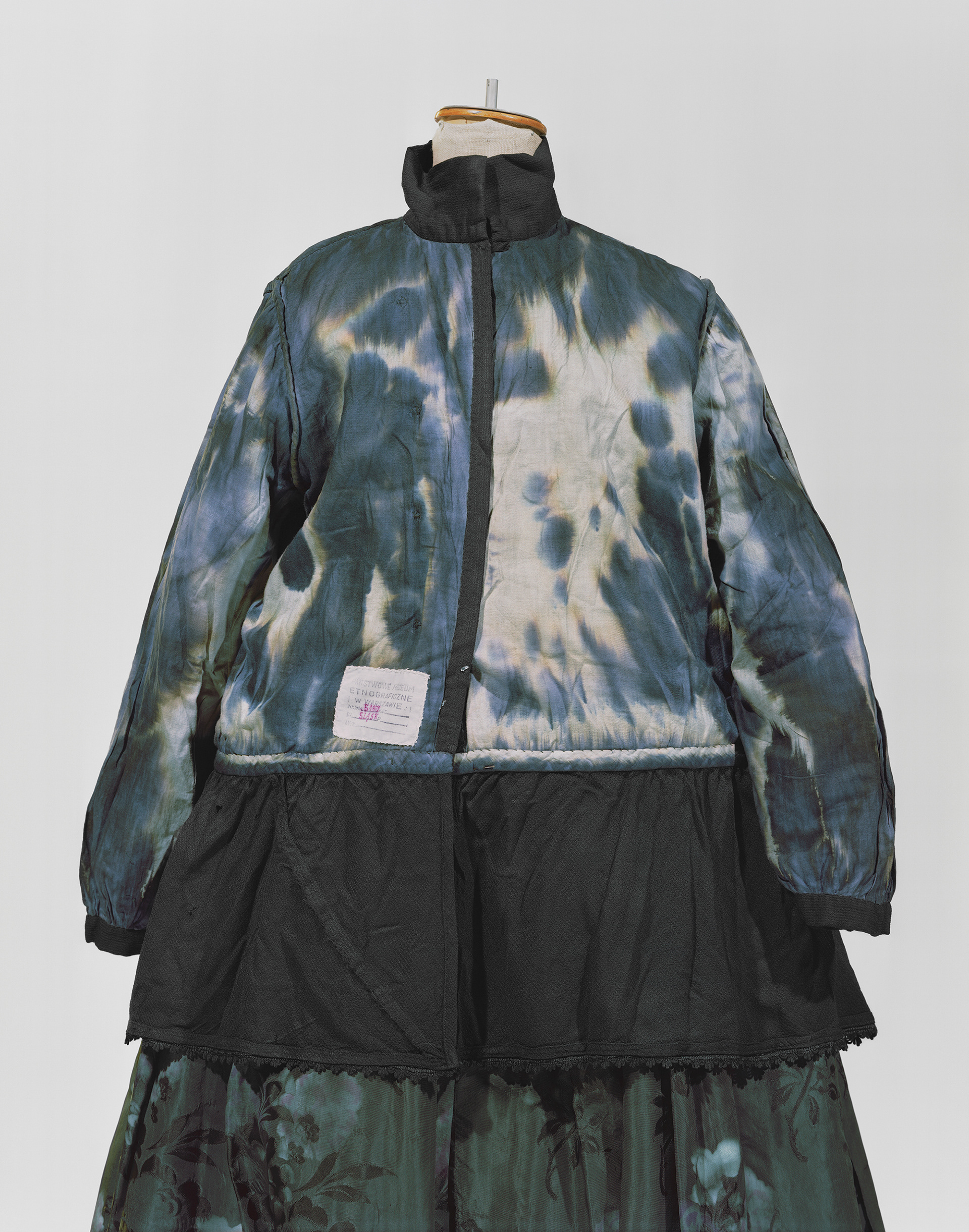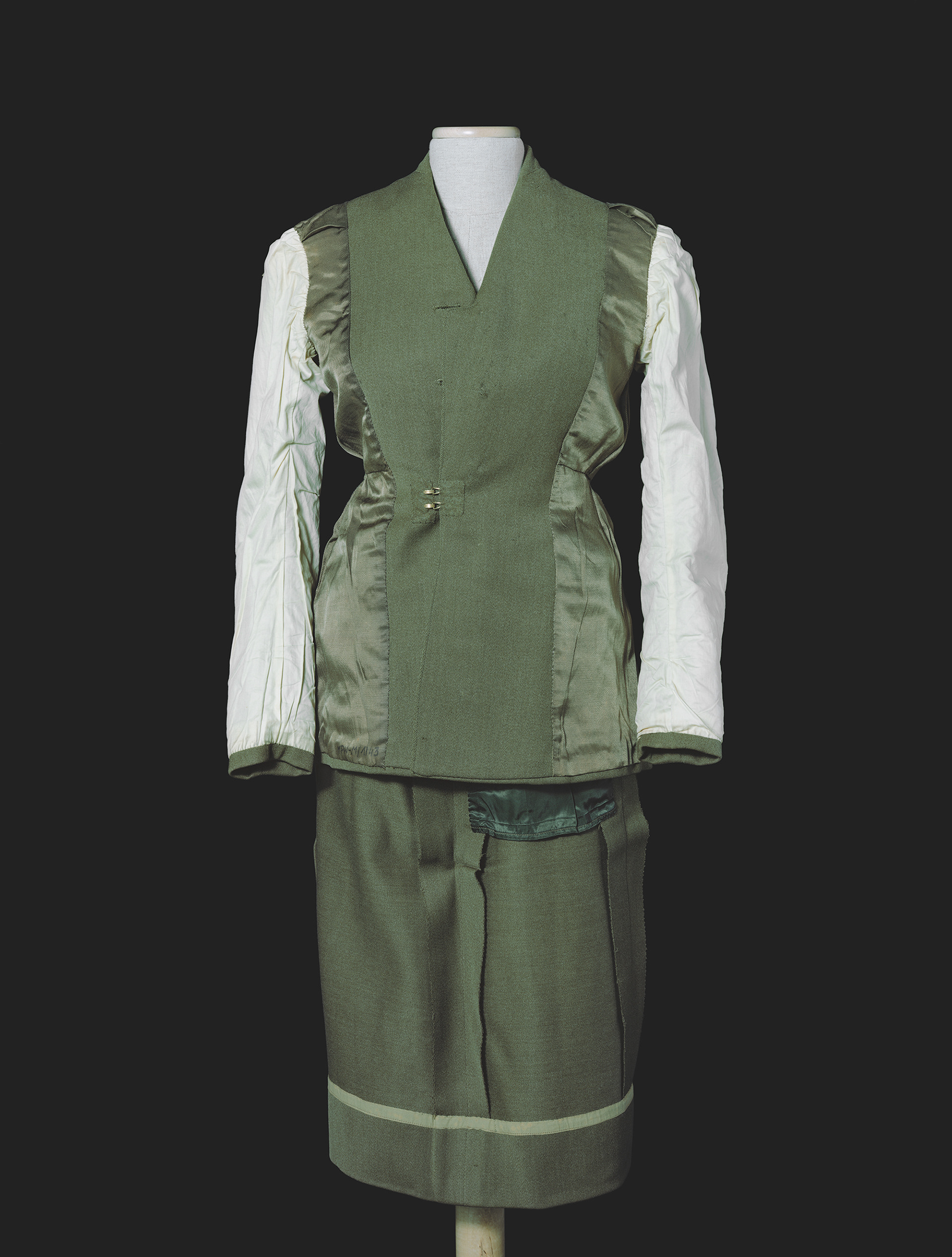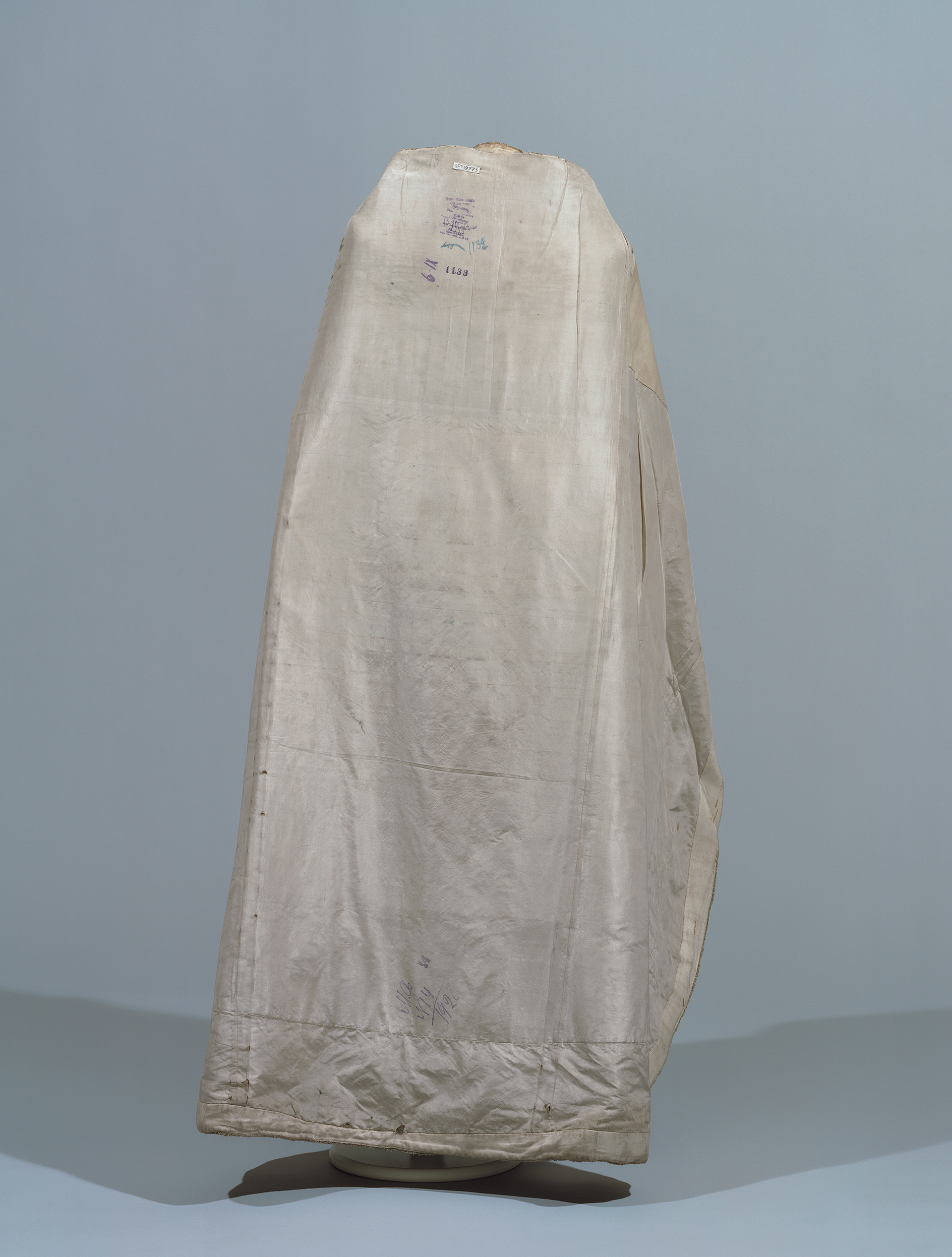“Reverse” (2016-)
The artworks in this series focus on the gesture of turning clothes from museum collections inside out. Reversing them acts as a symbolic invocation of the possibility of a different reading. Adopting the convention of museum photography - a grey background and neutral light - the images become incorporated into the domain of objective record. However historical costumes collected in museums often become the setting for a simplified image of the past or an image focused solely on aesthetics, foregoing the “other side”, that is frequently overlooked or absent. The exterior of the clothing builds and preserves historical records and meaning, while the interior gives voice to things that were not to be disclosed or represented. Through the gesture of reversing, the resulting images, while fitting into the formal canon of museum photographs, break through the boundaries of well-known historical narratives, uncovering new truths. Photographs in this series were taken in Poland, Belarus and Russia.
The artworks in this series focus on the gesture of turning clothes from museum collections inside out. Reversing them acts as a symbolic invocation of the possibility of a different reading. Adopting the convention of museum photography - a grey background and neutral light - the images become incorporated into the domain of objective record. However historical costumes collected in museums often become the setting for a simplified image of the past or an image focused solely on aesthetics, foregoing the “other side”, that is frequently overlooked or absent. The exterior of the clothing builds and preserves historical records and meaning, while the interior gives voice to things that were not to be disclosed or represented. Through the gesture of reversing, the resulting images, while fitting into the formal canon of museum photographs, break through the boundaries of well-known historical narratives, uncovering new truths. Photographs in this series were taken in Poland, Belarus and Russia.


Reverse 8 (Józef Piłsudski's uniform jacket, National Museum in Cracow), 172cm x 140cm, 2016, photography
Reverse 14 (festive dress from Upper Silesia, Racibórz region, 1930s), National Ethnographic Museum in Warsaw, 178cm x 140cm,2017, photography


Reverse 5 (uniform worn by Jadwiga Nowak-Jeziorańska, 20th cent.), The Warsaw Rising Museum, 182cm x 130cm, 2017, photography
Reverse 1 (traditional Łowicz dress, Złaków Kościelny, 1930s), National Ethnographic Museum in Warsaw, 165cm x 130cm, 2017, photography


Reverse 24 (attire of a shamaness, Siberia, Yenisey Province, 19th/20th cent.), Russian Museum of Ethnography in St. Petersburg, 173cm x 131cm, 2017, photography
Reverse 24 liturgical vestment, The Naval Cathedral of St. Nicholas and the Epiphany in St. Petersburg, 19th/20th cent.), The Hermitage Museum in St. Petersburg, 173cm x 131cm, 2017, photography
Reverse, PF Gallery, Poznan, 2016
Backstage studio, Russian Museum of Ethnography in St.Petersburg, 2016
Backstage studio, 2016-2018